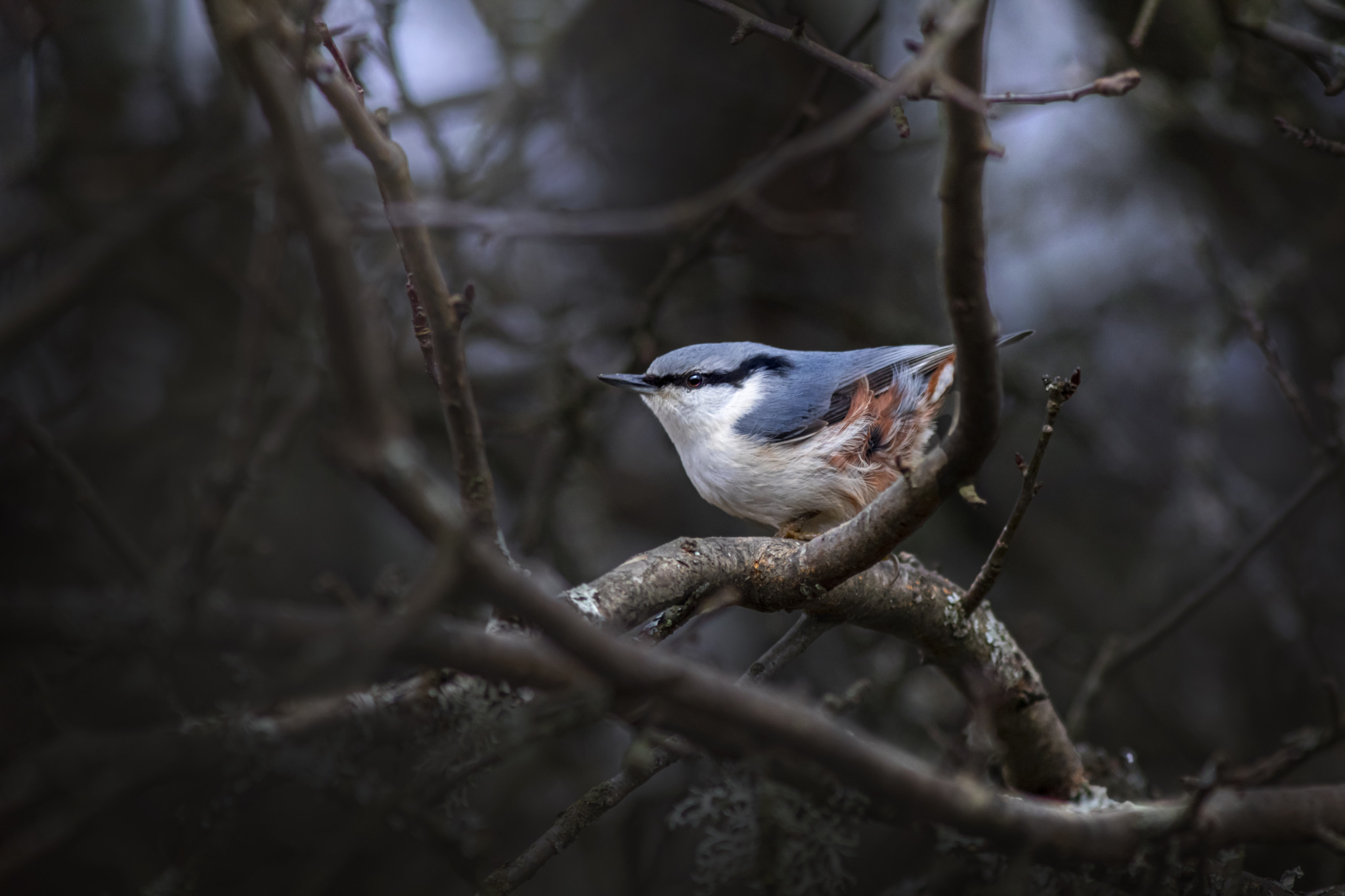Eurasian Nuthatch (Sitta europaea)
The Eurasian Nuthatch is a small, agile songbird known for its ability to climb headfirst down trees, a skill that sets it apart from most other birds. It is widespread across Europe and Asia, inhabiting woodlands, parks, and gardens.
Physical Description
- Size: 12–14 cm (4.7–5.5 inches)
- Wingspan: 22–27 cm (8.7–10.6 inches)
- Weight: 17–28 grams
- Plumage:
- Blue-grey back and wings
- Rusty-orange underparts (varying in intensity)
- Distinctive black eye-stripe running across a white face
- Short tail and strong, pointed beak
- Sexes look similar, but males may have a deeper orange belly.
Habitat & Distribution
- Found across Europe, temperate Asia, and parts of North Africa.
- Prefers mature deciduous forests with plenty of old trees, but also found in:
- Parks
- Gardens
- Orchards
- Woodlands with oak, beech, and pine trees
Behavior & Diet
- Feeding:
- Omnivorous; feeds on insects, seeds, nuts, and berries.
- Stores food in bark crevices for winter.
- Can break open nuts by hammering them with its beak.
- Climbing & Movement:
- The only small bird in Europe that can descend trees headfirst.
- Uses strong claws and short tail for grip.
- Vocalization:
- Loud, repeated “twit-twit” or whistling calls.
Breeding & Nesting
- Breeding Season: April–June
- Nests:
- Prefers natural tree holes or old woodpecker nests.
- Uses mud to reduce the entrance size, preventing predators.
- Eggs:
- 6–9 white eggs with reddish spots.
- Incubation:
- 13–18 days, mainly by the female.
- Fledging:
- Chicks leave the nest after 21–26 days.
Threats & Conservation
- Threats:
- Habitat loss due to deforestation.
- Competition for nest sites with woodpeckers and invasive species.
- Conservation Status:
- Least Concern (LC) on the IUCN Red List.
- Populations are stable in most of their range.
Interesting Facts
- The Eurasian Nuthatch is sometimes called the “tree-climber” because of its acrobatic abilities.
- Unlike woodpeckers, it does not use its tail for support when climbing.
- It often plasters mud around nest entrances to keep out predators.
- They are territorial and defend their feeding areas aggressively.
Summary
The Eurasian Nuthatch (Sitta europaea) is a bold and agile bird famous for its headfirst tree-climbing ability. With a varied diet, loud calls, and strong territorial instincts, it is a common but fascinating bird found throughout Europe and Asia.
Visited 277 times, 10 visit(s) today
Views: 548
Subscribe to the newsletter:
